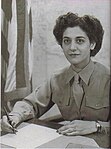Tomb of the Unknown Soldier (Arlington)
1921 establishments in Virginia1931 sculpturesAmerican World War I recipients of the Victoria CrossAmerican recipients of the Victoria CrossArlington National Cemetery ... and 7 more
Burials at Arlington National CemeteryMarble sculptures in VirginiaMilitary monuments and memorials in the United StatesMonuments and memorials in VirginiaTombs in the United StatesTombs of Unknown SoldiersWorld War I memorials in the United States

The Tomb of the Unknown Soldier is a historic monument dedicated to deceased U.S. service members whose remains have not been identified. It is located in Arlington National Cemetery in Virginia, United States. The World War I "Unknown" is a recipient of the Medal of Honor, the Victoria Cross, and several other foreign nations' highest service awards. The U.S. Unknowns who were interred are also recipients of the Medal of Honor, presented by U.S. presidents who presided over their funerals. The monument has no officially designated name.
Excerpt from the Wikipedia article Tomb of the Unknown Soldier (Arlington) (License: CC BY-SA 3.0, Authors, Images).Tomb of the Unknown Soldier (Arlington)
Memorial Drive, Arlington
Geographical coordinates (GPS) Address External links Nearby Places Show on map
Geographical coordinates (GPS)
| Latitude | Longitude |
|---|---|
| N 38.876388888889 ° | E -77.072222222222 ° |
Address
Tomb of the Unknown Soldier
Memorial Drive
22211 Arlington
Virginia, United States
Open on Google Maps









